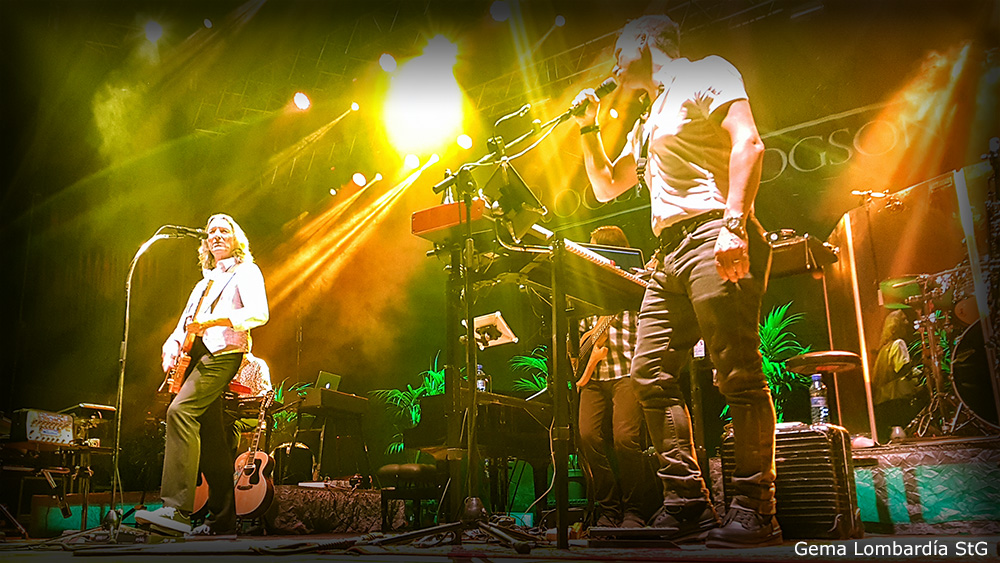|
ENGLISH

13 Julio, 2017 at 22:58
Roger Hodgson: las aventuras del Super Vagabundo en el Jardín Botánico
por Jose Carlos Rodrigo Breto
Roger Hodgson, el que fuera líder de la banda Supertramp en los años setenta y a principios de los ochenta, el Super Vagabundo, se enfrentó con éxito a una de sus misiones musicales en España. El lugar elegido fue el recinto del Jardín Botánico de Alfonso XIII en Madrid, dentro del Festival de Las Noches del Botánico. Durante algo más de dos horas realizó un nostálgico recorrido por los grandes éxitos de Supertramp, sin olvidarse de los mejores temas pertenecientes a su carrera en solitario.
1. Empieza la aventura: ¿Crisis, qué crisis?
El Super Vagabundo demostró, ya con la apertura del concierto, esa magnífica Take The Long Way Home (primera de las canciones que interpretó del magistral Breakfast In América) que los
superpoderes musicales que atesora continúan a plena potencia. Una voz aguda con ciertos matices tersos, unos dedos rápidos e inspirados sobre los teclados y, por encima de todo, unas composiciones sólidas como la roca. Canciones que han soportado el paso del tiempo como en el interior de un barril de cedro americano. Que han madurado, ganado en cuerpo y sabor, y que ahora descubren, en todo su relieve, una colorida sinfonía.
En su primera locución al público manifestó sus intenciones, el objeto de su lucha sobre el escenario. Estamos inmersos en un
tiempo de crisis y problemas, nos dijo, pero en las siguientes
dos horas de concierto pensaba hacernos apartar esas angustias de nuestros corazones y derrotar, así, a nuestras crisis personales. Solo le faltó preguntarse —como hacía con
Supertamp en 1975, con el álbum Crises, What Crises?— dónde estaba la crisis, porque pensaba acabar con ella después de que uno se permitiera dejarse curar por el ensalmo de su música.
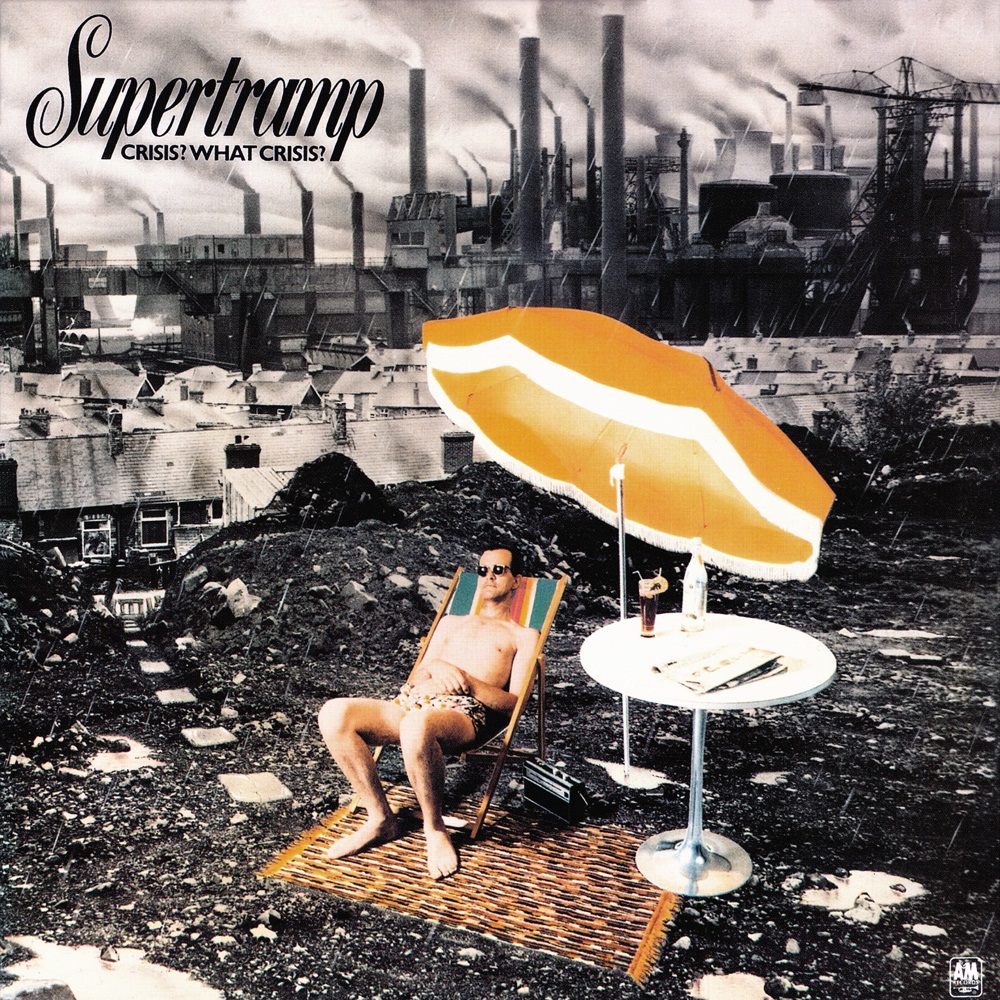
|
Pero ningún Super Héroe que se precie se presenta en su batalla contra las fuerzas de la crisis y de los malos tiempos sin un equipo, toda una
Liga Fantástica. Así, los 4 Fantásticos que ayudaban a
Roger Hodgson en la titánica tarea eran: Kevin Adamson en los teclados, con los poderes de sus múltiples brazos que se ocupaban del piano o de los sintetizadores;
Aaron MacDonald y su soplido musical, desarrollado en impecables solos de saxofón, clarinete o harmónica;
David J. Carmenter y sus dedos percusivos al bajo y, por último, la defensa del escuadrón, a la batería,
Bryan Head, levantando un muro de sonido con sus tambores ejecutados con sencillez y estilo.
El Super Vagabundo lanzó sus primeros ataques demoledores contra la crisis utilizando uno de los pesos pesados del repertorio, la canción
School, del disco Crime Of The Century, de 1974. Esa voz aflautada, aniñada, era el mejor remedio para combatir todos los males, y si se unía a los míticos toques de harmónica, no cabía duda de los estragos que haría en el público. Desde esta segunda canción la audiencia ya estaba rendida a
Hodgson.
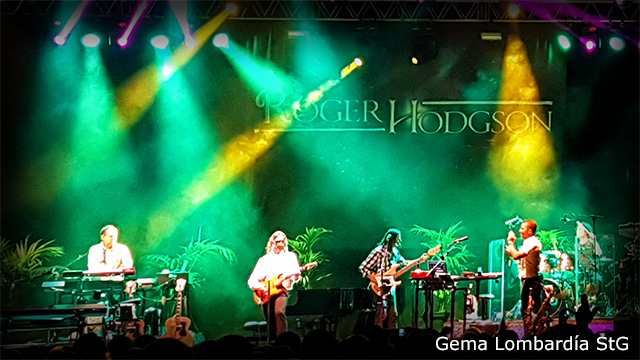
2. Episodio dos: el amor viene al rescate y nos hace despertar
Pero las armas del
Super Vagabundo eran muchas, todo un arsenal de composiciones delicadas, con sus toques de complejidad, muy bien arropadas por la banda, siempre en un tono perfecto, rellenando los huecos que dejaba
Roger Hodgson. Alternadas con algunas canciones de su carrera en solitario, el músico de Portsmouth atacó
Breakfast In America, Hide In Your Shell —resultó especialmente agradable toparnos con esta canción que nos abrazó como si un viejo amigo viniera a nuestro encuentro— y
The Logical Song. Si el monstruo de la crisis y los problemas aún se mantenía en pie, con este último tema hincó la rodilla en el suelo. Las canciones de los discos
Crime Of The Century y Breakfast In America resultaban letales, perfectas para combatir estos malos tiempos de tribulaciones.
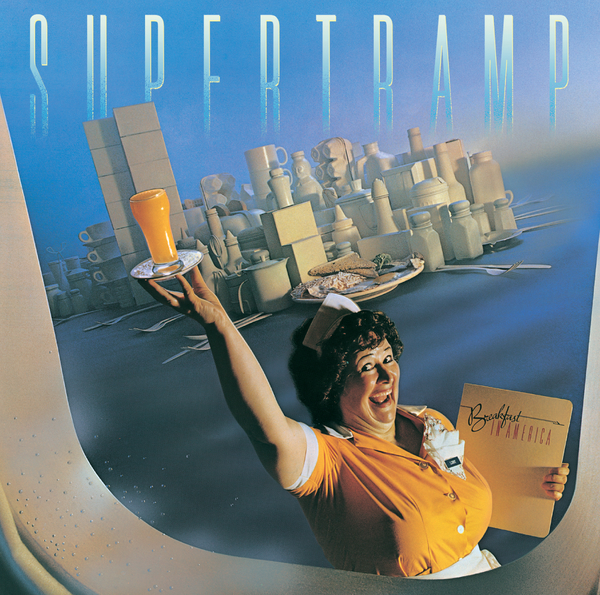
Tras el momento álgido de
The Logical Song, el Super Vagabundo inició una aproximación intimista e introspectiva hacia el
amor, el otro vehículo necesario para obtener una completa victoria. Concatenó dos composiciones muy líricas,
Teach Me To Love Again y Lord Is It Mine. El primer tema presentaba una peculiaridad: nadie podía haberlo escuchado antes porque no estaba todavía grabado. Era una
primicia absoluta. La delicadeza de la canción resultó perfecta para acometer
Lord Is It Mine, una de las composiciones de Supertramp más tiernas, y también, en cierto modo, una especie de oración por la
conexión de todas las almas. El amor, ese leguaje universal.
Y ese amor, también debe manifestarse con los
animales, en cierto modo se planteaba una metáfora sobre nuestro interior salvaje y ahora domesticado por los problemas, los miedos y las obligaciones.
Roger Hodgson formuló la disyuntiva al público: de ser todos nosotros animales salvajes y caer prisioneros… ¿Preferiríamos la muerte antes de acabar en un
zoo? Entonces, nadie pudo resistirse a pensar si su vida se estaba desarrollando en un zoo, atrapados en una celda, condenados por rutinas y angustias, mientras los acordes de la balada
Death And Zoo iban creciendo hasta desbordar el escenario con los barritos de los
elefantes y los sonidos de la jungla.
Y como si fuera un discurso escrito a propósito de esa forma, tras la reflexión y toma de conciencia de la
cárcel en la que nos hemos dejado internar, sonó The Awakening, otra primicia todavía sin grabar: era el momento de despertarnos, tomar las riendas, pasar a la acción.
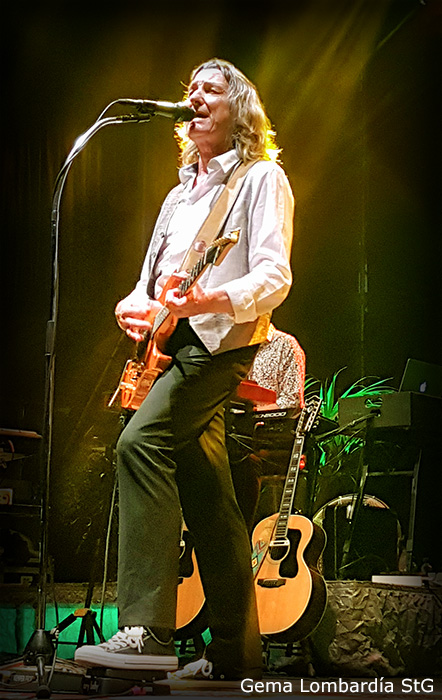
3. Capítulo final: La victoria del Super Vagabundo y sus 4 Fantásticos
Fue Had A Dream el momento más poderoso de concierto. La canción, perteneciente al primer disco en solitario de
Hodgson, In The Eye Of The Storm, de 1984, sonó contundente en los instrumentos de la banda, y fue cuando más se alejaron del
art-rock que caracteriza al músico, para aproximarse simplemente al
rock. Una oleada que conduciría hacia el final del espectáculo, que se cerró con un trío de canciones que golpearon directamente en el corazón del monstruo de la crisis, lo hicieron tambalearse y, finalmente, caer desplomado como lo hace
King Kong sobre el pavimento en cada una de sus películas. El
Super Vagabundo había vencido, junto a sus 4 Fantásticos, en el
Jardín Botánico.
Y esa tanda primorosa de canciones comenzó con
Child Of Vision, de Breakfast In America, con su poderoso juego de voces y sus toques sinfónicos. Siguió con
Dreamer y el retorno a la infancia de muchos de los presentes, al tiempo de las ilusiones, que se mezclaba con los recuerdos de la adolescencia, cuando esta canción tiñó las vidas de muchos de nosotros: a golpe de sintetizadores.
Y para terminar: Fool's Overture. El público entregado a la interpretación de uno de los temas que más acercó a
Supertramp al rock sinfónico, de ese inspiradísimo
Even In The Quietest Moments de 1977. Una larga suite repleta de detalles musicales, con la que muchos retornaron a sus tiempos más felices, cuando parecía que se iban a comer el mundo…
Roger Hodgson todavía pudo volver para ejecutar los dos bises finales:
Give A Little Bit y It's Raining Again, ante el delirio de los presentes. La cercanía del cantante había sido total, entregado a su audiencia española desde el inicio, mostrándose muy cercano y siempre con ganas de agradar. Al fin y al cabo, un
Super Héroe se debe a su público, pensé, pero entonces recordé algo que me advirtió que este
talante positivo y optimista siempre ha sido una marca de estilo en
Roger Hodgson.
Mientras hacía las delicias de la gente con su interpretación de Give A Little Bit —también de
Even In The Quietest Moments—, vino a mi cabeza un programa de televisión. Corría el año 1985 y Hodgson se encontraba realizando la gira promocional de televisiones con motivo de su primer disco en solitario. En el casi siempre infame programa
Tocata, interpretó Had A Dream y In Jeopardi, en el consabido playback de la época, para después de contestar a unas preguntas con gran amabilidad, marcarse en directo y de forma totalmente inesperada, guitarra en mano y repleto de entusiasmo, un
Give A Little Bit que debería ser historia de los Archivos de la televisión pública. Resulta que, por entonces, este
Super Héroe ya estaba luchando contra los fantasmas.
4. Epílogo: Y la felicidad vuelve a llover sobre nuestras cabezas
Y llegó, entonces, It's Raining Again. Realmente, el Super Vagabundo y su equipo hacía rato que habían derrotado a la crisis y a sus problemas. Le habían pateado el trasero, mandándola muy lejos de allí. Puede que a esas horas ya volara sobre el
Manzanares, o mucho más allá, mientras el público, a coro, vociferaba ese conjuro que es la letra de
It´s Raining Again.
Y resultaba curioso que una canción de un disco crepuscular, ese Famous Last Words… de 1982, que terminó con
Hodgson abandonando el grupo, fuera uno de los mayores hits de la historia de
Supertramp. Pero es que las obras maestras se sobreponen a todo tipo de problemas, ya sean desencuentros, discusiones o enfados. Igual que la música de
Roger Hodgson, el Super Vagabundo, campeó triunfal sobre un país oscurecido por los problemas y fue capaz de arrancar el carbón de la angustia de los corazones para, durante dos horas elegantes, verter sobre nosotros las notas de una curación prodigiosa.
Clic aquí para ver el artículo original:
Roger Hodgson: las aventuras del Super Vagabundo en el Jardín Botánico
Translation by Ana Lopez

July 13, 2017 at 22:58
Roger Hodgson: The Adventures of the Super Tramp in the Botanical Garden
by Jose Carlos Rodrigo Breto
|
Roger Hodgson, who was the leader of the band Supertramp in the seventies and in the early eighties, the Super tramp, successfully faced one of his musical missions in Spain. The chosen venue was the site of the Botanical Garden of Alfonso XIII in Madrid, within the Festival of Las Noches del Botánico. For a little more than two hours he made a nostalgic trip around Supertramp's greatest hits, not forgetting the best songs from his solo career.
1. The adventure begins: Crisis, what crisis?
The Super Tramp demonstrated, with the opening of the show, that magnificent
Take The Long Way Home (first of the songs that he interpreted of the masterful
Breakfast In America) that the
musical superpowers that he treasures continue at full power. A sharp voice with certain smooth tones, fast fingers and inspired on the keyboards and, above all, solid compositions such as rock stones. Songs that have stood the test of time like being inside an American cedar barrel. They have matured, gained in body and taste, and now they discover, in all their relief, a colorful symphony.
In his first speech to the audience he expressed his intentions, the object of his fight on the stage. We are immersed in a
time of crisis and problems, he told us, but in the next two hours of the show he intended to make us separate those anxieties from our hearts and then defeat our personal crisis. He only needed to ask himself - as he did with
Supertamp in 1975, with the album
Crisis, What Crisis? - where the crisis was, because he thought to beat it after one allowed himself to be healed by spell of his music.
But there's no a
superhero who stands proud presents himself in his battle against the forces of crisis and bad times without a team, a whole
Fantastic League. So, the Fantastic Four who helped
Roger Hodgson in the titanic task were: Kevin Adamson on keyboards, with the powers of his multiple arms dealing with the piano or synthesizers;
Aaron MacDonald and his musical blow, developed in impeccable saxophone, clarinet or harmonic solos;
David J. Carpenter and his percussive fingers on the bass and, finally, the defense of the squadron, at the drums,
Bryan Head, raising a wall of sound with its drums executed with simplicity and style.
The Super Tramp launched his first demolishing attacks against the crisis using one of the heavyweights of the repertoire, the song
School, from the 1974's Crime Of The Century. That piped, childish voice was the best remedy to fight all ills, and if it's joined the mythical harmonica, there was no doubt about the ravages he would make in the audience. From this second song the audience was already surrendered to
Hodgson.

2. Episode two: love comes to the rescue and makes us wake up
But the weapons of the
Super Tramp were many, a whole arsenal of delicate compositions, with their touches of complexity, very well wrapped by the band, always in a perfect tone, filling the gaps left by
Roger Hodgson. Alternating with some songs of his solo career, the musician from Portsmouth attacked
Breakfast In America, Hide In Your Shell —it was especially nice to meet this song that embraced us as if an old friend came to meet us — and
The Logical Song. If the monster of the crisis and problems still stood, with this last song sank its knee down on the floor. The songs from
Crime Of The Century and Breakfast In America were lethal, perfect to fight these bad times of tribulations.

After the high moment of The Logical Song, the
Super Tramp started with an intimate and introspective approach to
love, the other vehicle necessary to obtain a complete victory. He linked two very lyrical compositions,
Teach Me To Love Again and Lord Is It Mine. The first song had a peculiarity: no one could have heard it before because it was not yet recorded. It was an
absolute brand new track. The delicacy of the song was perfect for
Lord Is It Mine, one of the most tender compositions of Supertramp, and also, in a way, a kind of prayer for the
connection of all souls. Love, that universal language.
And that
love, must manifest itself as well with the
animals, in a certain way a metaphor was put on our wild interior and now domesticated by the problems, the fears and the obligations.
Roger Hodgson formulated the dilemma to the audience: If being all of us wild animals and caught prisoners ... Would we prefer death before ending up in a
zoo? Then, no one could resist thinking if his life was developing in a zoo, trapped in a cell, condemned by routines and anguish, while the chords of the ballad Death And Zoo were growing up to overflow the stage with the
elephants' trumpets and the sounds of the jungle.
And as if it were a speech written in that way, after the reflection and awareness of the
prison in which we were obliged to go, The Awakening sounded, another
brand new one not yet recorded: It was time to wake up, take the reins, take action.

3. Final Chapter: The Super Tramp's victory and his Fantastic Four
It was Had A Dream the most powerful moment of the show. The song, belonging to
Hodgson's first solo album, In The Eye Of The Storm, 1984, sounded blunt on the band's instruments, and it was when they moved further away from the
art-rock, trade mark of the musician, to simply approach to
rock. A wave that would lead to the end of the show, which was closed with a trio of songs that struck directly into the heart of the monster of the crisis, made him stagger and eventually fall as
King Kong does on the pavement in each of his films. The
Super Tramp had won, along with his Fantastic Four, at the
Botanical Garden.
And that exquisite batch of songs began with
Breakfast In America's Child Of Vision, with its powerful set of voices and symphonic touches. It followed with
Dreamer and the return to childhood of many of those there, at the time of illusions, which mixed with the memories of the adolescence, when this song tinged the lives of many of us: a blow of synthesizers.
And to finish: Fool's Overture. The audience surrendered to the performance of one of the songs that most approached
Supertramp to the symphonic rock, from that very inspired
Even In The Quietest Moments of 1977. A long suite full of musical details, with which many returned to their happiest times, when it seemed that they were going to eat the world ...
Roger Hodgson was still able to return to run the final encore:
Give A Little Bit and It's Raining Again, under the delirium of everybody there. The singer's closeness had been total, surrendered to his Spanish audience from the beginning, being very close and always eager to please. After all, a
Super Hero is due to his audience, I thought, but then I remembered something that warned me that this
positive and optimistic mood has always been a style mark on Roger Hodgson.
While delighting people with his performance of Give A Little Bit —also from
Even In The Quietest Moments— came to my head a TV show. It was the year 1985 and
Hodgson was doing the promotional television tour because his first solo album. In the almost always infamous
Tocata TV show, he played Had A Dream and In Jeopardy, with the usual playback of that age, after answering some questions with great kindness,he did live and totally unexpected, guitar in hand and full of enthusiasm, a
Give A Little Bit that should be history of the Archives of Spanish Public Television. It turns out that, by then, this
Super Hero was already fighting against the ghosts.
4. Epilogue: And happiness returns to rain on our heads
And then, it comes It's Raining Again. Actually, the Super Tramp and his team had long since defeated the crisis and its problems. They had kicked her butt, sending her far away. It may be that at that time it already flew over the
Manzanares, (river of Madrid), or much beyond, while the audience, in chorus, sang so loud that spell that is the lyrics of
It's Raining Again.
And it was curious that a song from a twilight album, that Famous Last Words ... from 1982, which ended with
Hodgson leaving the band, was one of the biggest hits in the history of
Supertramp. But it is that the masterpieces overlap all kinds of problems, whether they are disagreements, arguments or anger. As the music of
Roger Hodgson, the Super Tramp, triumphantly fighted over a country under the dark due to the problems and was able to draw the coal of the anguish of the hearts, for two elegant hours, to pour upon us the notes of a prodigious healing.
Click here for the original article:
Roger Hodgson: The Adventures of the Super Tramp in the Botanical Garden
|
|
|



